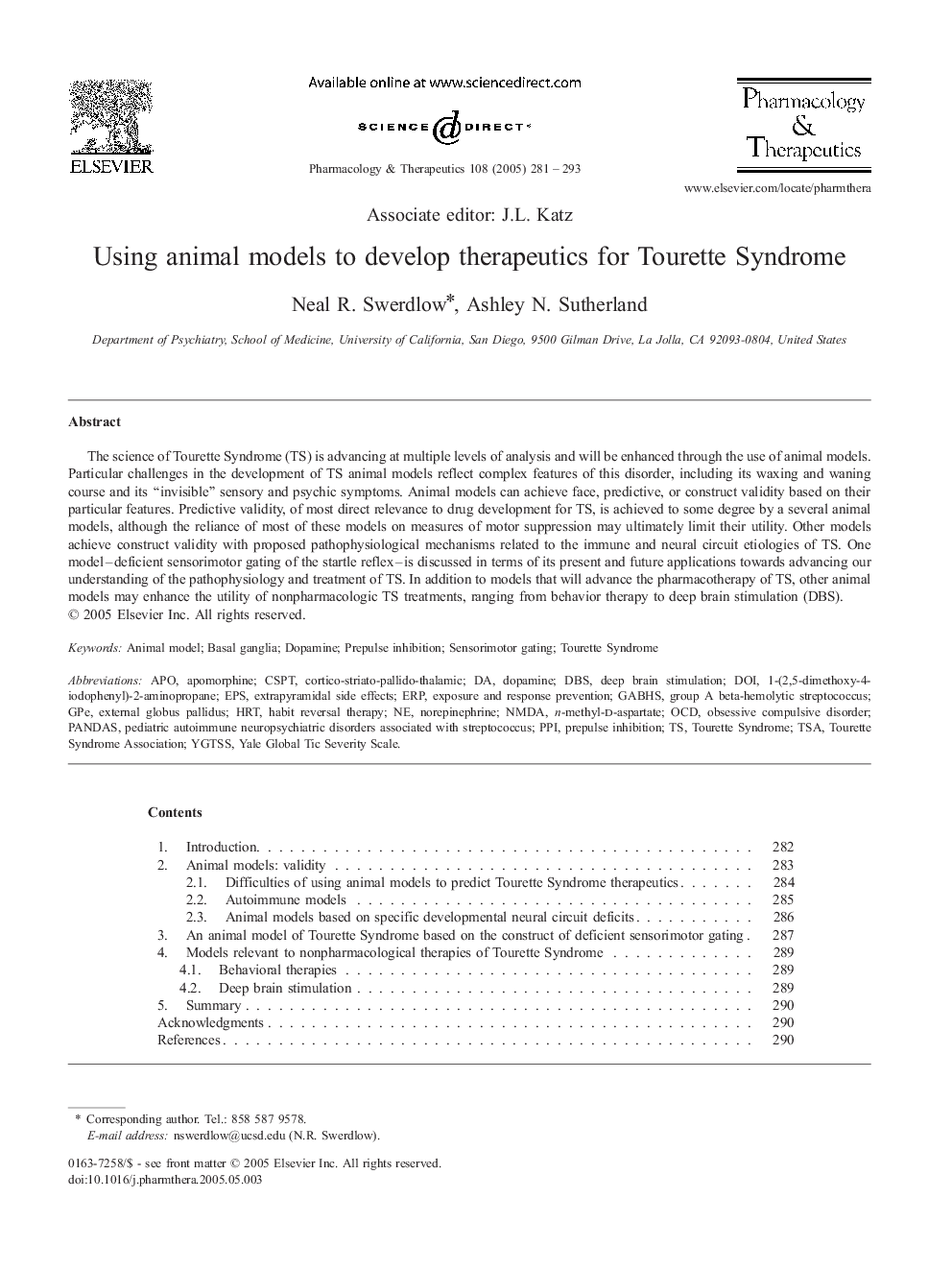| Article ID | Journal | Published Year | Pages | File Type |
|---|---|---|---|---|
| 9015856 | Pharmacology & Therapeutics | 2005 | 13 Pages |
Abstract
The science of Tourette Syndrome (TS) is advancing at multiple levels of analysis and will be enhanced through the use of animal models. Particular challenges in the development of TS animal models reflect complex features of this disorder, including its waxing and waning course and its “invisible” sensory and psychic symptoms. Animal models can achieve face, predictive, or construct validity based on their particular features. Predictive validity, of most direct relevance to drug development for TS, is achieved to some degree by a several animal models, although the reliance of most of these models on measures of motor suppression may ultimately limit their utility. Other models achieve construct validity with proposed pathophysiological mechanisms related to the immune and neural circuit etiologies of TS. One model-deficient sensorimotor gating of the startle reflex-is discussed in terms of its present and future applications towards advancing our understanding of the pathophysiology and treatment of TS. In addition to models that will advance the pharmacotherapy of TS, other animal models may enhance the utility of nonpharmacologic TS treatments, ranging from behavior therapy to deep brain stimulation (DBS).
Keywords
DBSOCDN-methyl-d-aspartateNMDAYGTSSDOIGPEPPIHRTEPSTSAYale Global Tic Severity ScaleGroup A beta-hemolytic streptococcus1-(2,5-dimethoxy-4-iodophenyl)-2-aminopropaneexternal globus pallidusapoApomorphineObsessive compulsive disorderERPdeep brain stimulationExposure and response preventionDopamineTourette syndromebasal gangliaextrapyramidal side effectsAnimal modelPrepulse inhibitionnorepinephrinePANDASGABHSSensorimotor gating
Related Topics
Health Sciences
Pharmacology, Toxicology and Pharmaceutical Science
Pharmacology
Authors
Neal R. Swerdlow, Ashley N. Sutherland,
